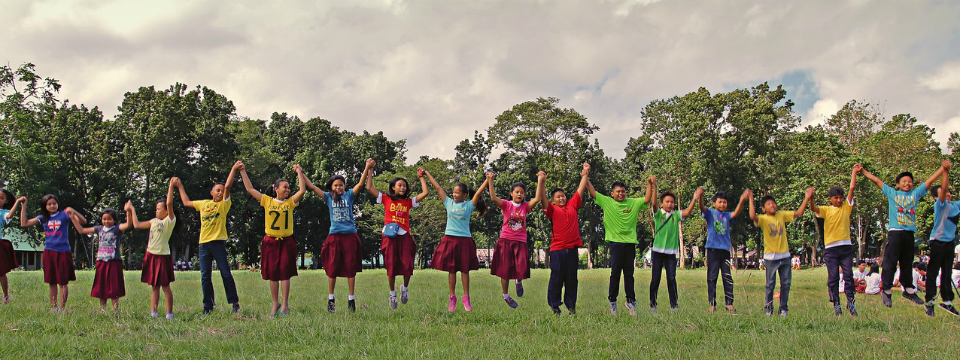How Schools Can Teach Students to Network (Even When Students Don’t Think They Have One)
By Sarah D. Sparks, Reprinted from Education Week
Many schools have used federal funding to hire or assign staff or volunteers to build one-on-one relationships with students. But as leaders grapple with staff shortages and overwhelmed teachers, it may be more effective and sustainable to help students learn to find and develop support networks on their own.
“Schools in the name of efficiency tend to focus on the relationships that they can control within the four walls of the classroom or the school building,” said Julia Freeland Fisher, a social capital researcher and author of a new Christensen Institute study of social capital-building in schools. “And while that’s understandable, it means that they suffer this huge blind spot of the true kind of relationship ecology that young people grow up in beyond school, and where they actually may be more likely to turn for support.
“They’re just leaving a ton of social capital on the table by taking that more insular approach,” she said.
Social capital—the web of relationships that students can draw on for things like information, accountability, and physical or emotional support—can be less visible to educators than more discrete resources like family income or extracurricular activities. In a series of case studies and surveys, Fisher tracked how schools, community groups, and social services organizations improved students’ academic progress and engagement by helping them identify and build their social capital.
Informal support at school can be as or more useful than formal mentoring programs. A 2021 longitudinal study found that adolescents who identified an informal mentor at school—usually a trusted teacher or counselor—passed more classes, earned more credits, and had higher grade point averages than those who did not have such a mentor. And mentored students were 15 percentage points more likely to attend and persist in college—in part because the vast majority of these informal relationships continued well past students’ high school graduation. A separate 2020 study also found first-generation college-going students who learned to develop and build informal relationships had higher GPAs.
However, researchers also found that low-income and racial minority students often have less access to informal school mentors than wealthier or white students. And experts say staff in low-income schools often have less mental and emotional bandwidth to mentor students in this way.
Edward DeJesus is founder of Social Capital Builders, which works with a dozen districts nationwide to teach both teachers and students “social capital literacy,” or learning how to build and maintain important relationships over time. He said students from low-income and minority backgrounds often need to learn how to use relationships with people they know to bridge to new relationships, such as asking the accountant at a parent’s job to discuss financial aid.
“Say, we’re both African American and we live in the same low-income neighborhood. There’s probably a lot of redundancy in our information, so we’re not jumping the opportunity gap,” DeJesus said.
In 2020, Elizabeth Raposa, an assistant psychology professor at Fordham University, in New York City, and her colleagues adapted a mentoring program which taught first-generation college-goers to build networks on campus into Connected Futures, a free online curriculum. Its goal is to teach middle and high school students how to find people who can help them meet academic, career, or mental health goals.
“We try to empower youth to think about what a mentor is and who that might be in their own lives,” said Raposa. “We give them a lot of tools for mapping out their own social networks. And then we’re actually teaching them the nuts and bolts of, how do you reach out to set up a meeting? What do you talk about in a meeting with an adult? How do you follow up and maintain relationships?”
Mapping relationships helps students find new support
One idea: have students think carefully about who they might be able to tap. “Students often don’t know who they know,” DeJesus said.
Social Capital Builders, Connected Futures, and other programs focused on building students’ social capital use “relationship mapping” or “social network mapping,” a model long used in social work. Students chart out each person they interact with in different contexts, such as at school, among family and friends, or in community or religious organizations.
They mark “strong ties” of people they have strong, ongoing relationships with, such as a family friend or neighbor, as well as “weak ties” among people with whom they do not have as close of a relationship, but who can still provide important supports. Examples might include a former coach who holds a student accountable for getting good grades or a church member who is an engineer and willing to allow a student to shadow her at her job.
Schools can build lessons in social capital into existing curriculum. For example, DeJesus noted that a common high school assignment in English or business classes—résumé writing—can be tweaked to help students develop longer term relationships.
“Yes, I can teach young people about the necessity of a résumé, how to write a résumé … or I can tell the young person, I want you to find a gainfully employed person in your community who has a résumé. Let’s sit down together and come up with some questions to ask them and go out there, get that information and bring it back to the classroom,” he said. “And now I’m connected to the person who could help me get a résumé done when I need it, because I’m going be out of this class in six months.”
To access the resource, please click here.














